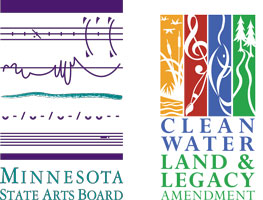
Northrop Presents
10,000 Dreams: A Celebration of Asian Choreography
Past event
Apr 12, 2024
Apr 13, 2024
A blossoming initiative to recognize and elevate Asian creatives working in ballet, this program of Asian and Asian American choreography—co-curated by Final Bow for Yellowface’s Phil Chan—features The Washington Ballet, BalletMet, and Oakland Ballet Company. These performances celebrate the 75th anniversary of Singaporean choreographer Choo San Goh (1948-1987) who brought The Washington Ballet international acclaim, plus works by BalletMet’s Edwaard Liang—the first Asian Artistic Director for a major American ballet company, Phil Chan and Caili Quan for Oakland Ballet Company, and the Minnesota debut of choreographer Brett Ishida.
Program includes
Ballet des Porcelaines by Phil Chan, Oakland Ballet Company, with live music from a five-piece Baroque orchestra*
when shall we three meet again by Brett Ishida, The Washington Ballet
Finding Light pas de deux by Edwaard Liang, BalletMet
Momentum pas de deux, The Washington Ballet, with live orchestra*
Layer Upon Layer by Caili Quan, Oakland Ballet Company
Fives by Choo San Goh, The Washington Ballet, with live orchestra*
*Live music by STRINGenius.com Orchestra.
Fri, Apr 12
Sat, Apr 13
If you need assistance with your tickets, please call 612-624-2345, email umntix@umn.edu.
Final Bow for Yellowface website
The Washington Ballet company website
BalletMet company website
Oakland Ballet Company website
'10,000 Dreams' at Northrop seeks to celebrate Asian choreography and end stereotypes–Star Tribune
The content below derives from the Northrop Across Campus Program that supports Northrop's mission towards intersections between performing arts and education for the benefit of all participants now and for generations to come.
Find ways to make thematic connections to these suggested topics:
Take a deeper dive with these resources that provide additional information about the performers, the history of the artform, and the artistic process.
Links:
Start a conversation about the performance, or encourage reflection, using these questions as inspiration.
In April, Northrop will present 10,000 Dreams, a program of Asian and Asian American choreographers co-curated by Final Bow for Yellowface’s Phil Chan, featuring The Washington Ballet, BalletMet, and Oakland Ballet Company. The program marks the first time Northrop has presented ballet by Asian choreographers, and is a celebration of Asian creatives—both past and present—working in ballet.
Final Bow for Yellowface was founded by Georgina Pazcoguin, New York City Ballet soloist, and Phil Chan, choreographer, arts administrator and educator, with a simple pledge: "I love ballet as an art form, and acknowledge that to achieve a diversity amongst our artists, audiences, donors, students, volunteers, and staff, I am committed to eliminating outdated and offensive stereotypes of Asians (Yellowface) on our stages." Since 2017, almost every major American ballet company has signed the pledge, and Pazcoguin and Chan have advised performing arts groups on how to maintain the integrity of works from the classical Western canon while updating outdated representations of Asians.
In his book Final Bow for Yellowface: Dancing Between Intention and Impact, Chan outlines the long history in America of demonizing Asians. “Adopting a caricature of the Chinese in our cartoons, propaganda, and theatrical productions helped us justify treating these new immigrants as less than full Americans, or even less than human. Whilethe Act II divertissement in The Nutcracker from 1892 was doubtfully created as a minstrel show, polluted imagery of the Chinese slowly seeped into our productions as an easy (arguably lazy) way to show audiences ‘Chinese.’”
Choo San Goh, a major Sinagaporian-American ballet talent, who would have been 75-years-old this season, was The Washington Ballet’s resident choreographer and associate artistic director and brought the company international acclaim. In a tribute to the late choreographer, Oakland Ballet’s artistic director, Graham Lustig shared, “Choo San Goh’s legacy as a teacher, choreographer, and director, is a testament to his creative vision as a world-class artist and the visionary gift of his choreographic foundation continues to benefit many dance companies and choreographers.”
Choreographer Caili Quan, who will present her commissioned work, Layer upon Layer, has been commissioned by several ballet companies in the last several years to choreograph new ballets. Quan, who grew up in Guam, shared in an interview with Pointe Magazine, "No matter what the topic is that I end up researching for a dance, [Guam] always ends up creeping in."
Brett Ishida is a fourth generation Japanese American choreographer, who, according to her website, “intertwines reflections of ancient timeless themes of Greek philosophy and poetry with subconscious memories which shape who we are and where we are going.” At Northrop, she will present when shall we three meet again, based on the three witches in Shakespeare's Macbeth.

This activity is made possible by the voters of Minnesota through a Minnesota State Arts Board Operating Support grant, thanks to a legislative appropriation from the Arts and Cultural Heritage Fund.